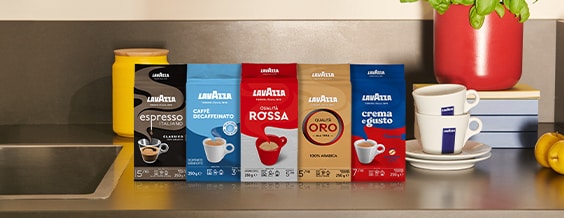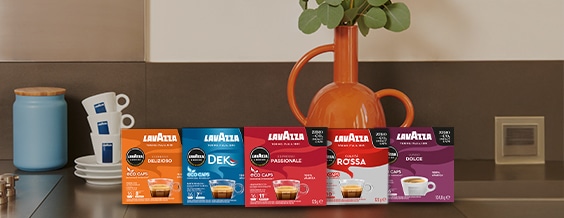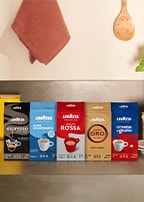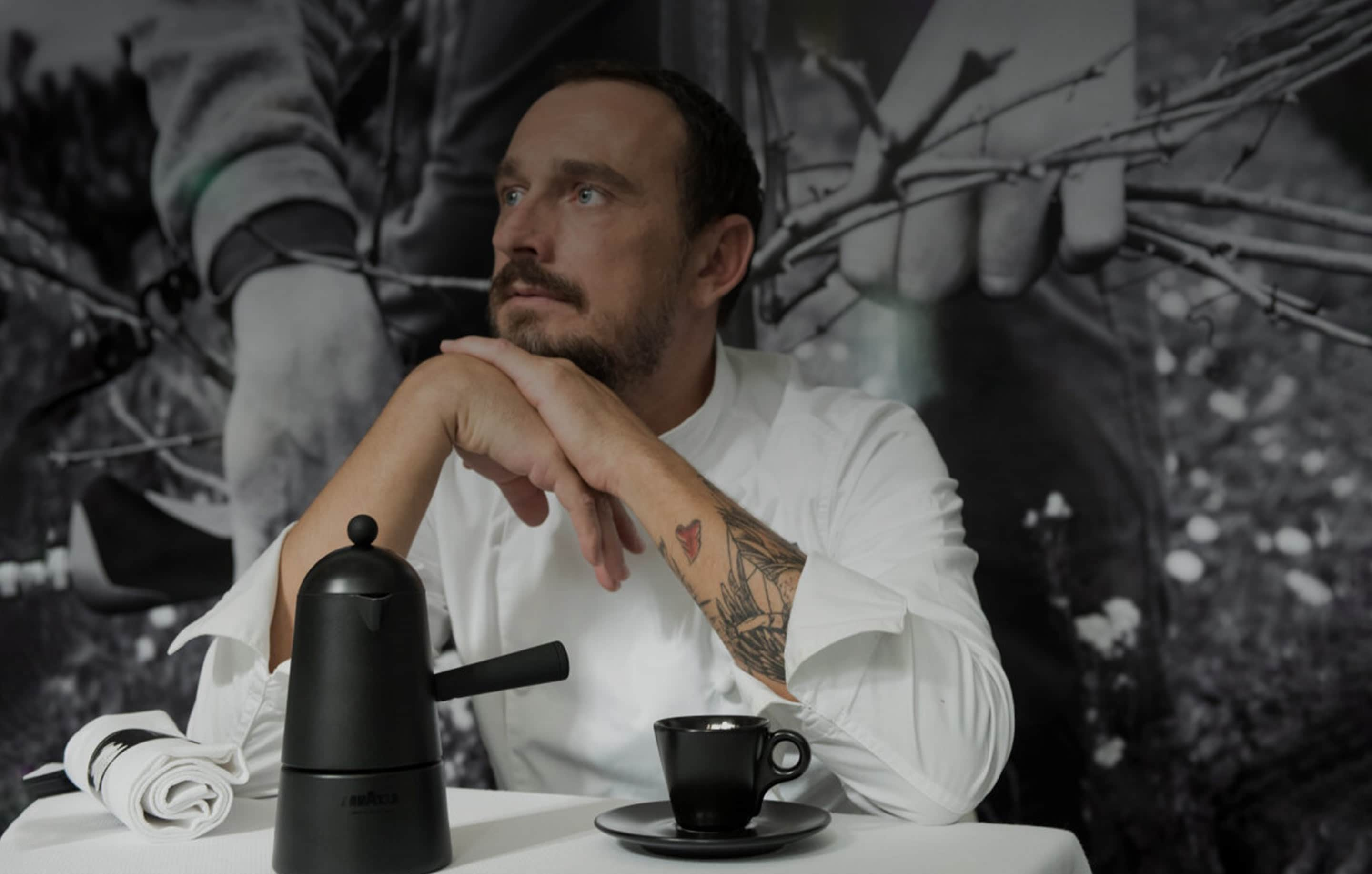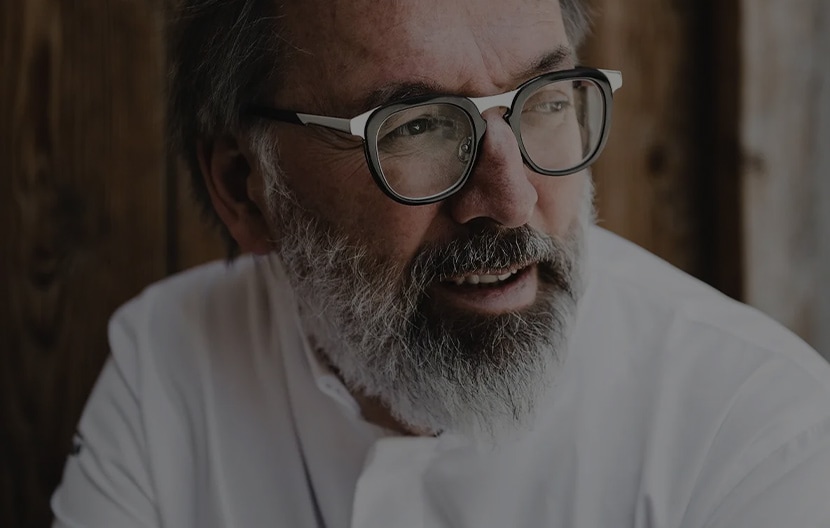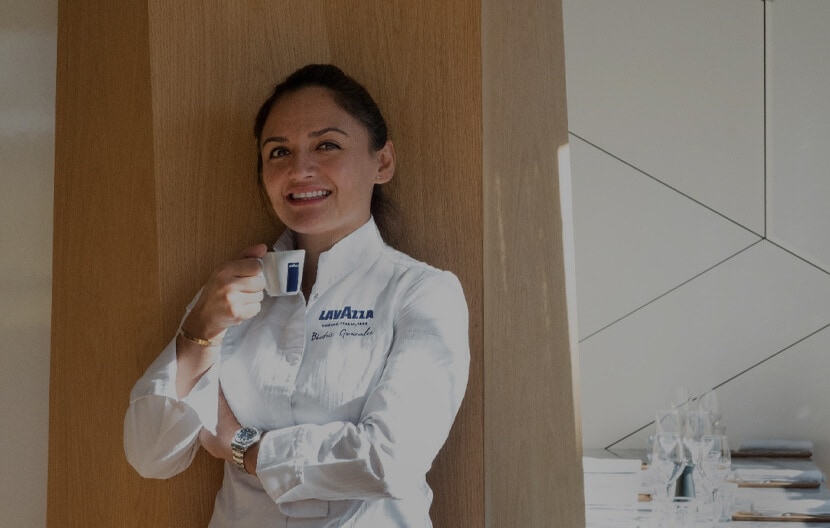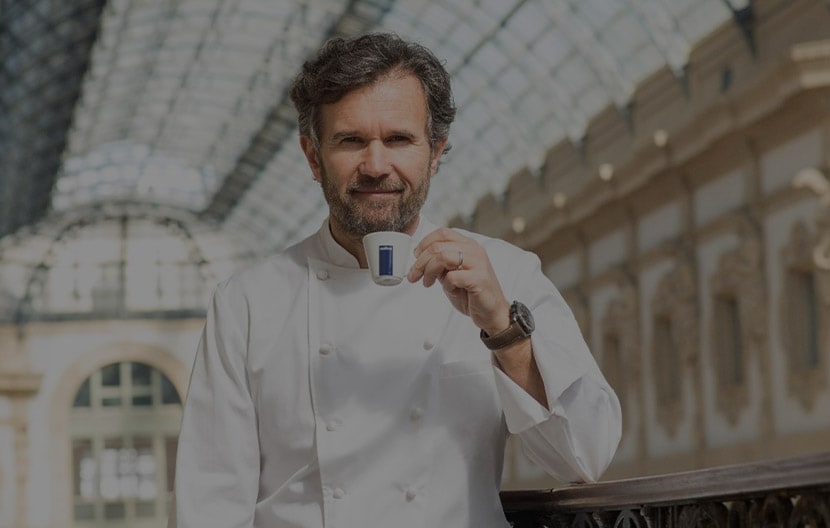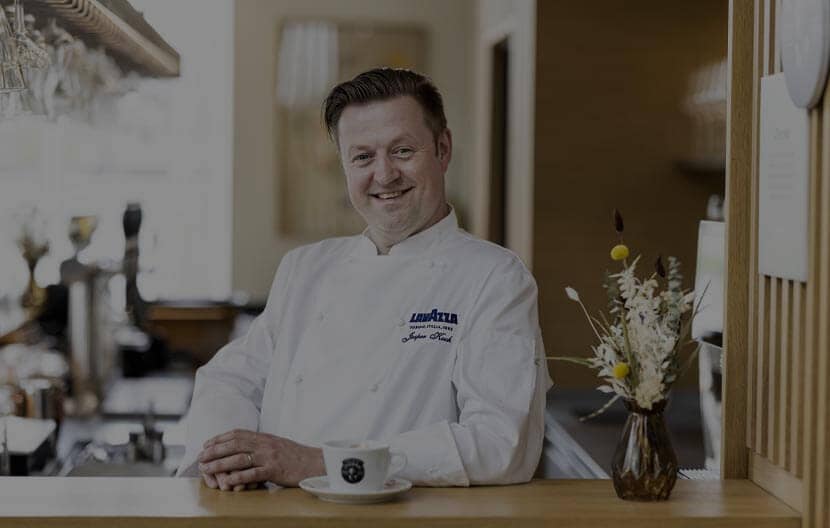*Lavazza is not affiliated with, endorsed or sponsored by Nespresso
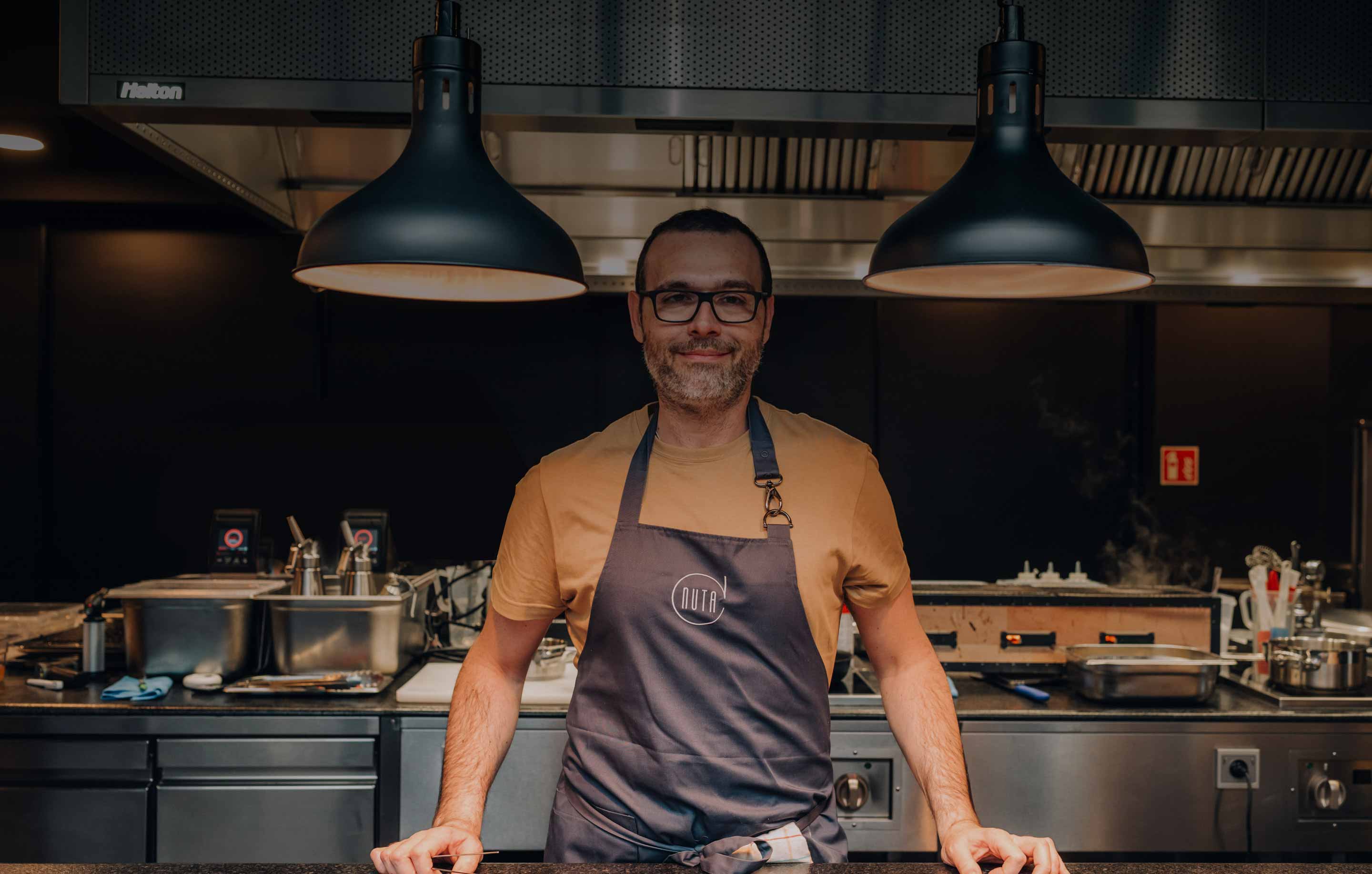
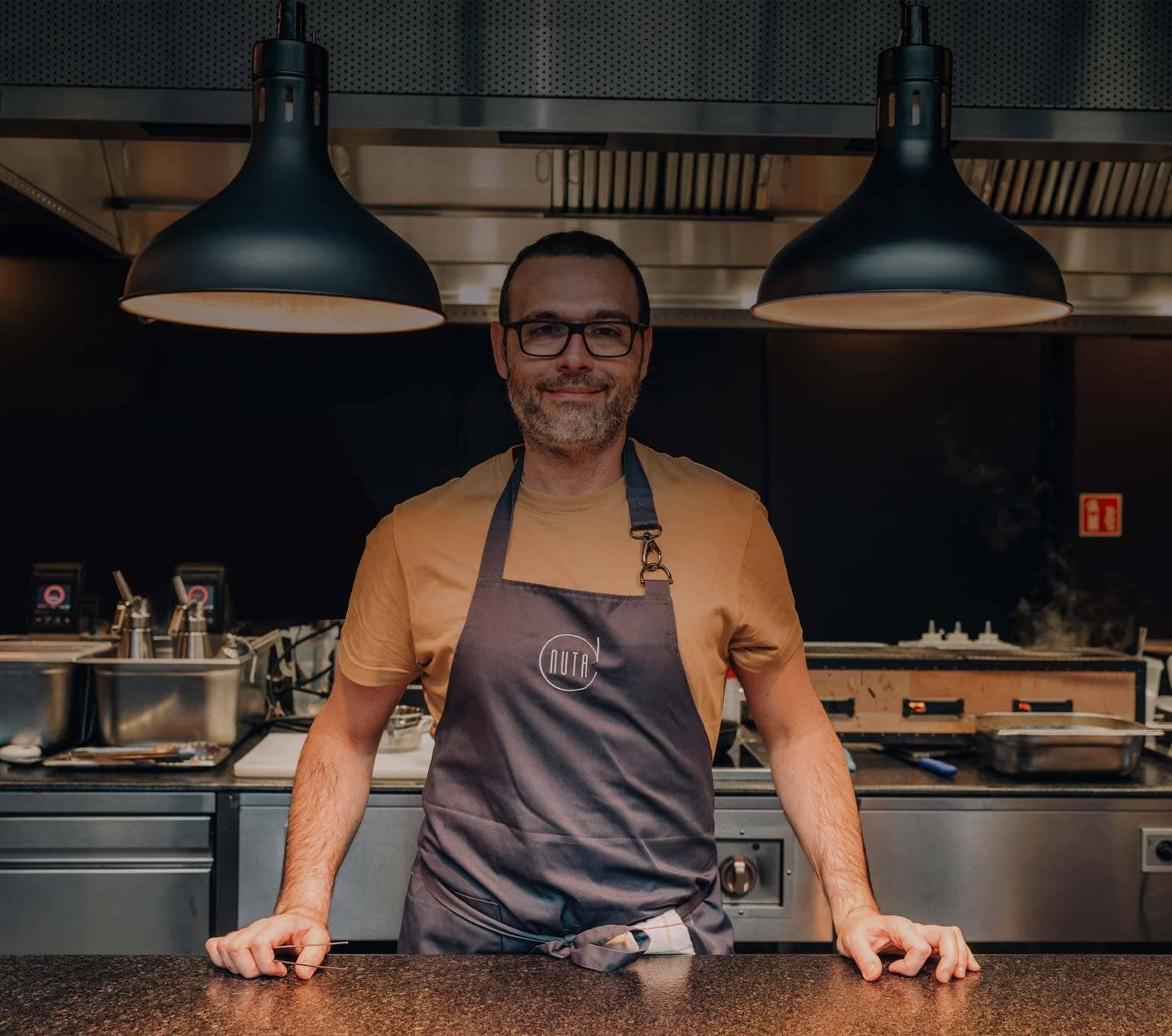
ANDREA CAMASTRA: POLISH CUISINE AND HIGH-TECH INSTRUMENTS
Modernity as a method but not as a goal
With his scientific style of cuisine, Andrea Camastra is the Italian chef who, in Warsaw, Poland, reinterprets Polish gastronomic tradition with contemporary flair using the most modern culinary techniques and his own incisive creativity. He believes that to truly experience the authentic food of this nation, you need to leave the city and savour home-cooked meals in the countryside. This is precisely where the Apulian chef from Monopoli, Bari, focuses his attention.
The Relationship Between Science and the Cuisine of Andrea Camastra
Understanding his culinary art requires exploring the profound connection between Polish cuisine and the chef’s approach, as well as how it intertwines with his passionate interest in the science of cooking. Camastra embraces the research of French chemist Hervé This into molecular gastronomy and his ‘note-by-note’ cuisine. This particular technique begins with a careful analysis of the molecules that make up a given ingredient to understand which of them contribute to its taste. These molecules are then extracted and used to replicate that specific taste in a dish or are combined with particles from other foods to create entirely new flavours that do not exist in nature. However, for Camastra, modernity is his method, not his goal.

Through the use of technology and an approach stripped of preconceptions, Chef Camastra delves deep into the traditions and practices of Polish cuisine, seemingly freeing it from excess to distill the essence of each dish. His interpretations of rosół, the broth synonymous with Sunday lunch for many Polish families, and gulasz, the beef stew renowned throughout Central Europe, manage to convey the unique flavours that evoke memories and stir emotions. The chef courageously explores every dimension of Polish cuisine, from the most contemporary and refined to the most rustic. An example of this is his troć wędrowna (sea trout) with almonds, green peppers, and saffron, a dish that pays homage to Poland’s historical role as a crossroads for spices and other exotic delights.
Experience at the Michelin-Starred Senses Restaurant
At his Michelin-starred Senses restaurant in Warsaw, the meal begins with his entrée chłab ze smalcem (bread and lard), a typical appetiser that the average customer dining out in Poland might expect to find on the menu, alongside other staples of traditional Polish cuisine such as mizeria, a dish made with cucumber, sour cream, and dill. There’s also oscypek, a traditional cheese from the Tatra Mountains and a classic at street fairs, typically grilled and served with cranberry sauce. All these dishes, enhanced by molecular techniques, are transformed into spheres: capsules that explode in the mouth, releasing familiar flavours that instantly transport you back to your grandmother’s kitchen.


The Opening of Nuta and the Michelin Star
After the success of Senses, which closed its doors during the pandemic, and the achievement of a Michelin star, Chef Andrea Camastra opened Nuta, a restaurant inspired by Polish cuisine with Italian accents and a subtle Asian touch. Located inside the prestigious Ethos building on Plac Trzech Krzyży, one of Warsaw’s main squares, the Italo-Polish chef expresses his creativity through two menus: ‘Virtuoso,’ an introduction to the world of haute cuisine, and ‘Maestro,’ the crowning glory of his career.


During the hours he spends in the kitchen, Camastra loves to listen to music, having been a musician himself since the age of eight. The chef considers learning and art to be the main sources of his creative culinary inspiration. In a moment of vibrant debate on the Polish culinary identity and its tension between tradition and innovation, Camastra makes culinary choices that, though apparently iconoclastic, reveal deep respect and love for this country’s food.





